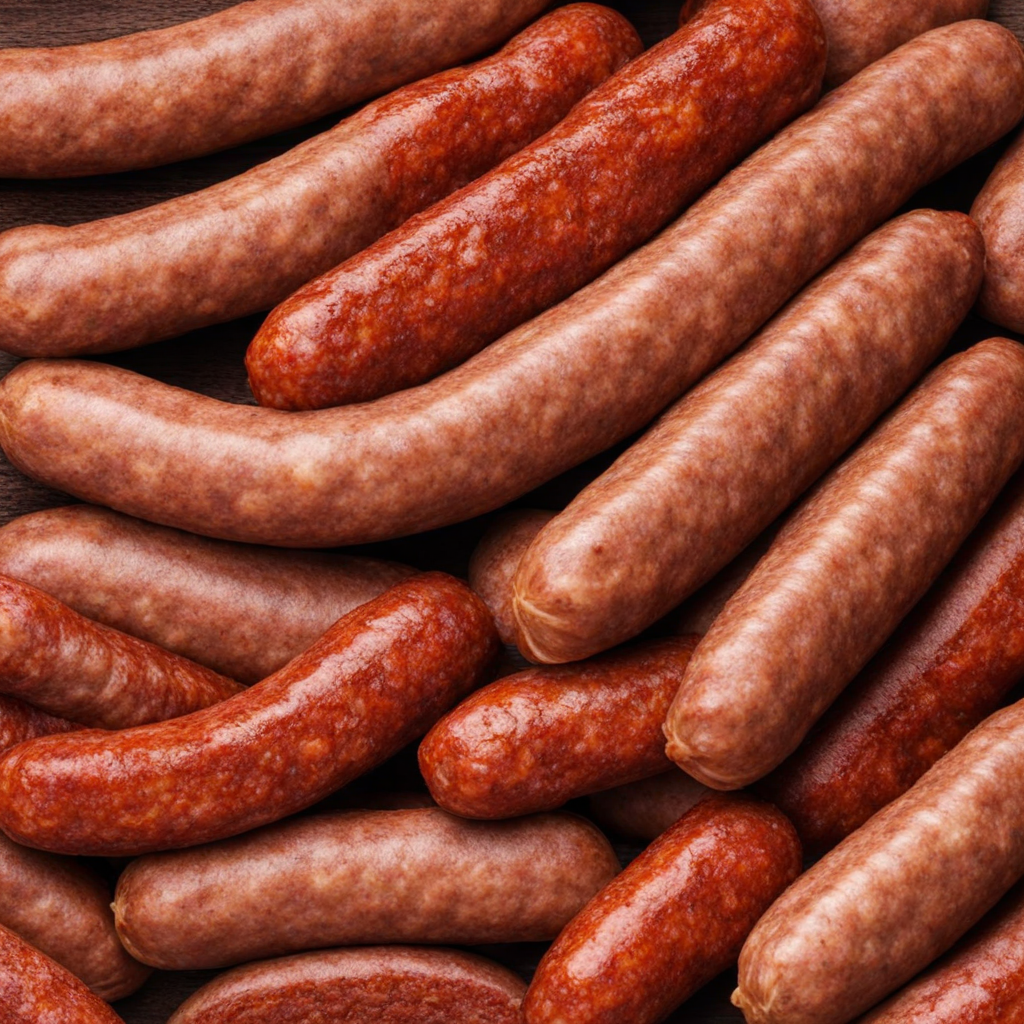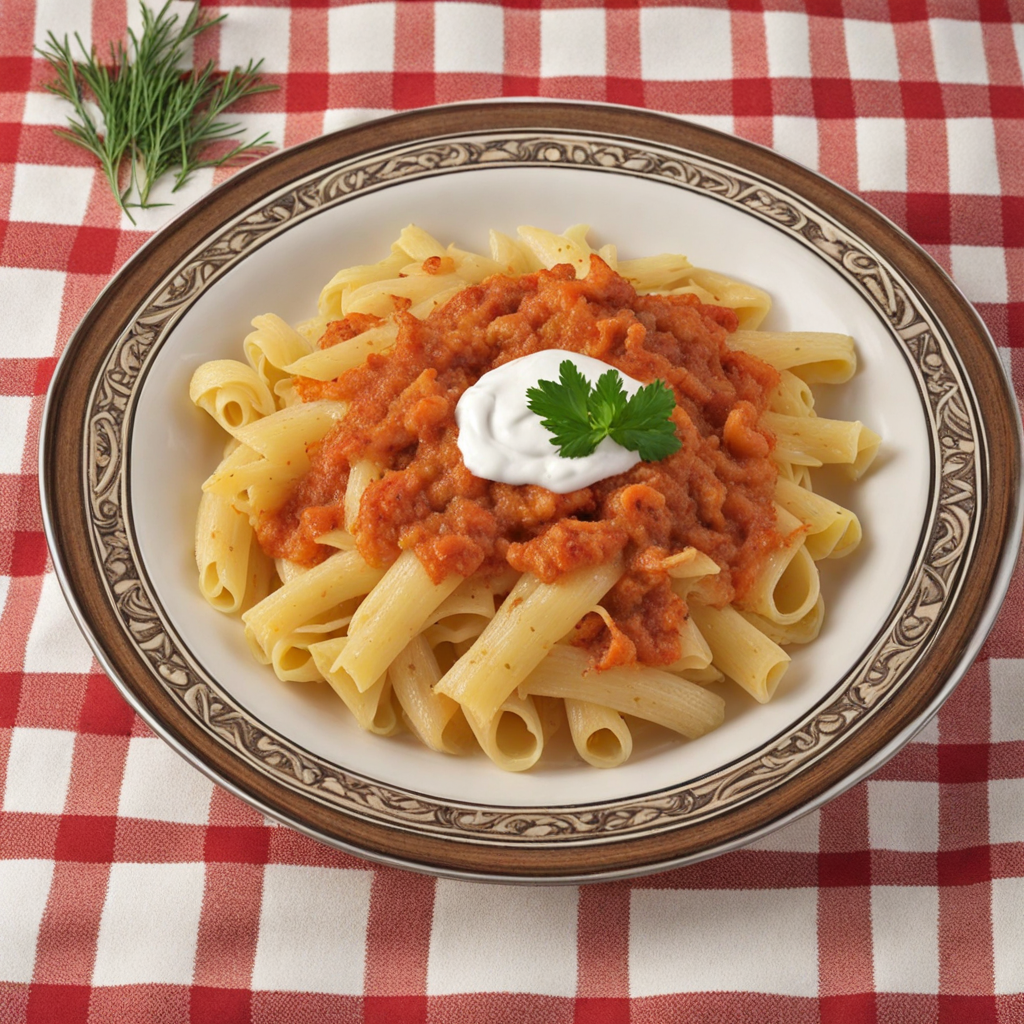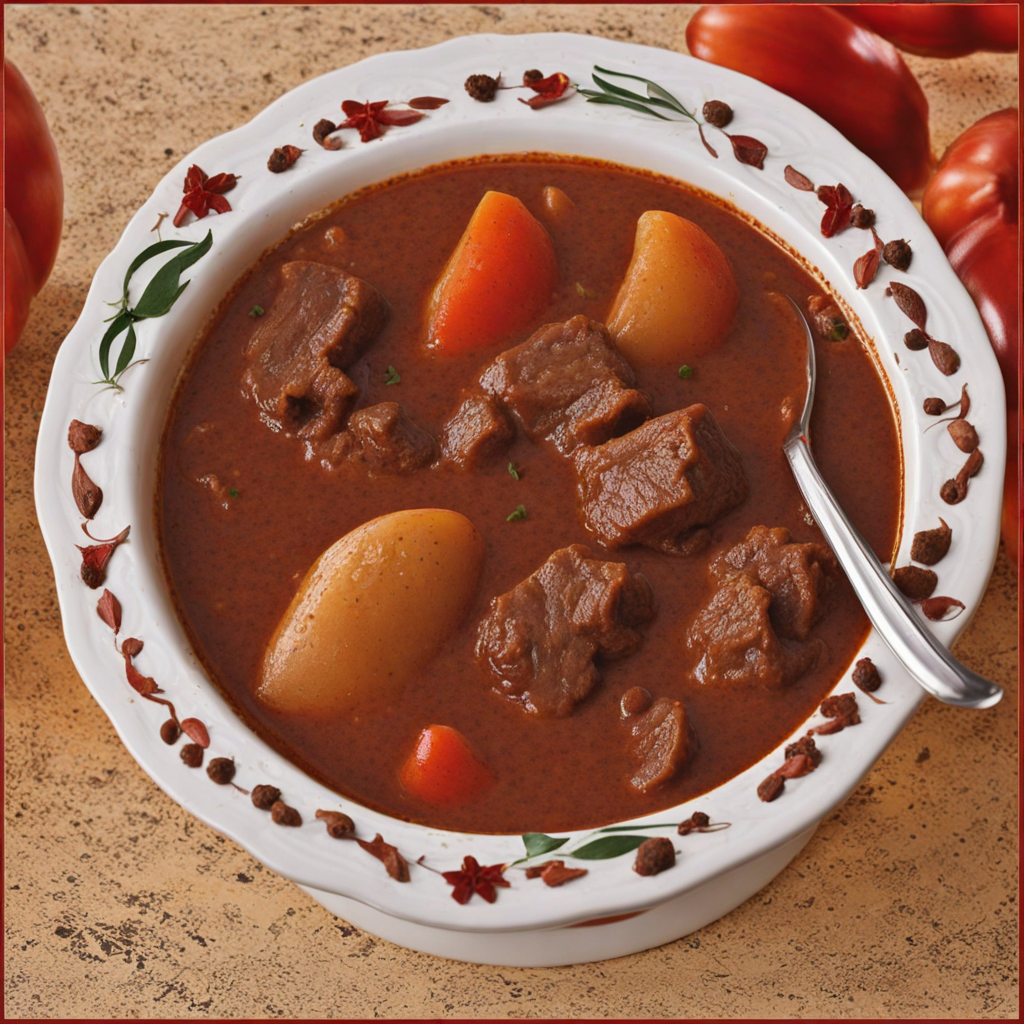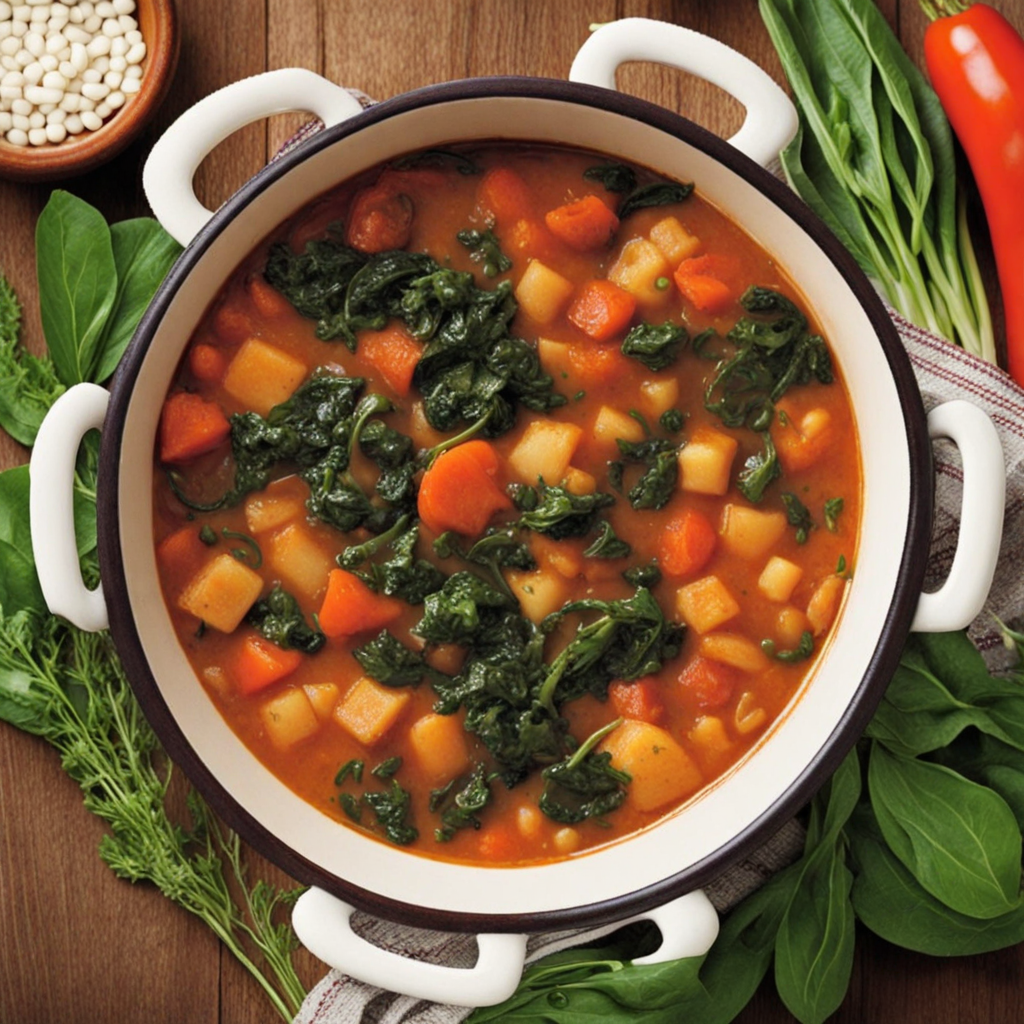Hungarian Sausage
Hungarian sausage, known as 'kolbász', is a delightful representation of Hungary's rich culinary heritage. This flavorful sausage is typically made from a blend of pork, beef, or sometimes even lamb, seasoned with a distinctive array of spices that often includes sweet paprika, garlic, and black pepper. The use of paprika, a staple in Hungarian cuisine, gives the sausage its vibrant red color and a unique depth of flavor, ranging from mildly sweet to intensely spicy, depending on the variety. The traditional preparation involves curing and smoking, which adds a robust smokiness that enhances its taste and aroma, making it an irresistible treat for meat lovers. One of the most renowned types of Hungarian sausage is 'Gyulai kolbász', originating from the town of Gyula. This particular sausage stands out due to its coarser texture and higher meat content, offering a satisfying chew with every bite. Often served sliced in a variety of dishes or enjoyed on its own as a snack, Gyulai kolbász is a favorite in Hungarian households and at local markets. Another popular variant is 'Debreceni kolbász', which is spicier and has a more pronounced flavor profile, making it perfect for grilling or adding to stews. These sausages not only showcase the artistry of Hungarian butchers but also reflect the country's rich agricultural landscape, where quality meats and spices are abundant. Hungarian sausage is more than just a culinary delight; it embodies the spirit of Hungarian culture and tradition. It is often enjoyed at festivals, family gatherings, and as a staple in many households, where it is served with fresh bread, pickles, or a tangy mustard. The versatility of kolbász allows it to be incorporated into various dishes, from hearty stews to savory pastries. For those seeking to explore new flavors, Hungarian sausage promises a tantalizing journey through the heart of Hungary, inviting you to savor its rich, spicy, and smoky notes that are sure to leave a lasting impression on your palate.
How It Became This Dish
The Rich History of Magyar Kolbász: A Culinary Gem of Hungary Hungary, a country steeped in history and culinary tradition, is renowned for its vibrant food culture, where dishes are often infused with stories of the past. Among its many gastronomic treasures, Magyar kolbász, or Hungarian sausage, stands out as a symbol of national pride, regional diversity, and the country's agricultural heritage. The origins, cultural significance, and evolution of this delightful food reflect the heart and soul of Hungary itself. #### Origins: A Taste of Tradition The history of Magyar kolbász dates back centuries, intertwining with the nomadic roots of the Magyar tribes that settled in the Carpathian Basin around the 9th century. The early Magyars relied heavily on livestock, hunting, and foraging, which laid the foundation for their culinary practices. Sausages, in various forms, became a practical solution for preserving meat, especially in a land where seasonal changes dictated food availability. The word "kolbász" is believed to have Slavic origins, likely derived from the word "kolbasa," indicating the cultural exchanges that occurred in this crossroads of Europe. As trade routes flourished, spices and preservation methods from diverse cultures began to influence Hungarian cuisine. The introduction of paprika, a staple of Hungarian cooking, in the 16th century was particularly transformative. This vibrant red spice became a crucial ingredient in Magyar kolbász, giving it the characteristic flavor and color that are still celebrated today. #### Cultural Significance: More than Just a Sausage Magyar kolbász is not merely a food item; it is a symbol of Hungarian identity and tradition. Sausages are often associated with communal gatherings and celebrations, particularly during harvest festivals and family events. The preparation of kolbász is often a collective effort, with families coming together to make the sausage, creating bonds and reinforcing cultural ties. In rural Hungary, the making of kolbász is a cherished tradition, often passed down through generations. Each family may have its own recipe that reflects local ingredients, flavors, and techniques. This regional variation contributes to a rich tapestry of kolbász types, including csabai, gyulai, and leberkolbász, each with distinct characteristics and preparation methods. Csabai kolbász, originating from the town of Csaba, is known for its smoky flavor and coarsely ground pork mixed with generous amounts of paprika. In contrast, gyulai kolbász from Gyula is typically made with a finer grind and is often smoked, embodying a slightly spicier profile. Leberkolbász, or liver sausage, represents another variant that showcases the creativity of Hungarian cooks in utilizing all parts of the animal. These sausages are not just enjoyed at home but are also celebrated at fairs and markets across Hungary. The Kolbász Festival, held annually, showcases various regional sausages and emphasizes the importance of this culinary art in Hungarian culture. Such events foster community spirit and allow artisans to share their craft with a wider audience. #### Development Over Time: From Tradition to Modernity As Hungary progressed through its tumultuous history, the production and consumption of kolbász evolved alongside societal changes. During the Austro-Hungarian Empire, the culinary landscape expanded, influenced by neighboring regions and cultures. Sausages became a staple not only in rural areas but also in urban centers, where they were embraced by the burgeoning middle class. The 20th century brought significant challenges, including two World Wars and the subsequent shift to a communist regime. These events led to food shortages and changes in agricultural practices. However, the resilience of Hungarian culinary traditions ensured that kolbász remained a beloved staple. In fact, it became a source of comfort during difficult times, with families finding ways to maintain their traditions even amidst adversity. The late 20th and early 21st centuries heralded a revival of interest in traditional foods, as people sought to reconnect with their culinary heritage. Artisanal producers began to emerge, emphasizing quality over mass production. This movement mirrored a broader trend in Hungary and across Europe, where the slow food movement sought to preserve regional cuisines, promote sustainable practices, and celebrate local ingredients. Today, Magyar kolbász is enjoyed not only in Hungary but also in various parts of the world, thanks to the Hungarian diaspora. Restaurants and specialty shops around the globe feature this sausage, introducing new audiences to its rich flavors. Furthermore, the rise of food tourism has led to an increased appreciation of the cultural narratives behind traditional foods, with travelers eager to experience authentic Hungarian cuisine. #### The Future of Magyar Kolbász As Hungary continues to embrace its culinary heritage, the future of Magyar kolbász looks promising. Chefs and home cooks alike are experimenting with new recipes while respecting traditional methods. Innovations may include incorporating contemporary ingredients or techniques while maintaining the essence of what makes kolbász unique. Moreover, the focus on sustainability and local sourcing is reshaping the sausage-making landscape. Many producers are returning to traditional farming practices, ensuring that the pork used in kolbász comes from ethically raised animals. This shift not only enhances the quality of the sausage but also aligns with the growing consumer demand for transparency in food production. Culinary education programs are also playing a vital role in preserving the art of making kolbász. Workshops and classes dedicated to sausage making are becoming increasingly popular, ensuring that younger generations learn these valuable skills. Such initiatives are crucial for maintaining the cultural significance of kolbász, as they instill a sense of pride and connection to Hungarian heritage. #### Conclusion Magyar kolbász is more than just a sausage; it is a reflection of Hungary's rich history, cultural identity, and evolving culinary landscape. From its ancient origins to its modern-day manifestations, kolbász embodies the spirit of community, tradition, and resilience. As Hungary continues to celebrate and innovate its food culture, Magyar kolbász remains a beloved cornerstone, inviting all to savor its history and flavor.
You may like
Discover local flavors from Hungary







